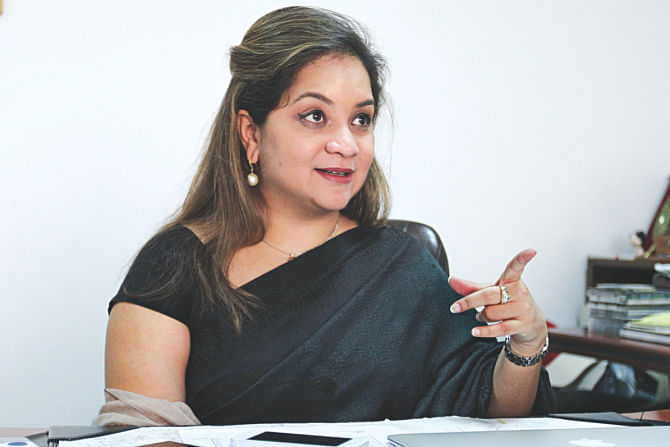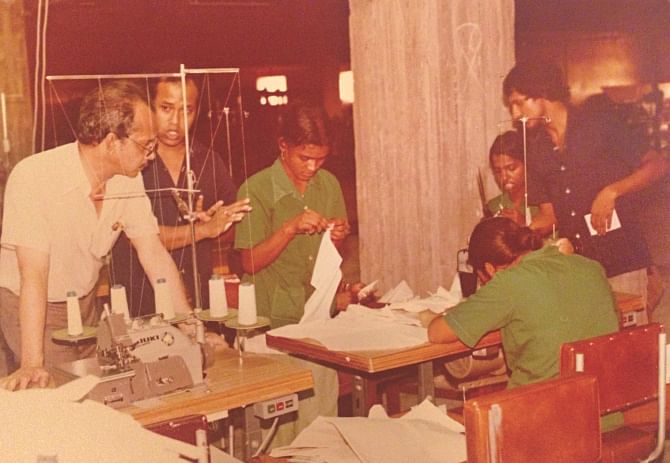Building blocks of garment industry

Bangladesh earned $25 billion in garment exports last fiscal year, against all odds.
That's a long way to come for an industry that began with the first shipment of just 1.2 lakh pieces of boys' shirts to German company MNR in January 1980.
Bangladesh now holds around 5 percent of the $450 billion global garment trade, standing just behind China in export earnings rankings.
Bangladesh's first batch of exports was produced at the Desh Garments factory set up in 1977 by the industry's pioneer Noorul Quader at Kalurghat in Chittagong.
Quader was a secretary of the Mujibnagar government during Bangladesh's Liberation War, but quit government service in 1975 to become an entrepreneur. He went to Singapore and returned after two years to start the factory.
Quader's daughter Vidiya Amrit Khan is currently at the helm of the firm, serving as a director.

Since Bangladesh was not a garment exporting country, Quader could not find enough local manpower with the required skills. Prior to operations, he sent a 130-member team, including 18 women, to South Korea in 1978 to receive training.
Quader's factory began operations in 1979, with the first shipment made in following January.
The history of Desh Garments and the enterprising Quader's contribution to the local industry is not widely known.
The company faced a setback after the early demise of the pioneer. He died of lung cancer in 1998, after battling the disease since 1987, Vidiya Khan said.0
Quader's efforts to set up a Tk 350 crore composite mill at Gazipur's Shafipur in 1990 failed for excessive red-tape involved with new projects. In 1991, flood waters inundated the Kalurghat factory and stopped production.
“During that time we were too young to handle the business, especially sitting abroad,” said Vidiya Khan, who is also a director of Bangladesh Garment Manufacturers and Exporters Association.
“I returned to Bangladesh in 2005 after completing an education in law from London, and started working as a barrister with a firm in Dhaka.” “But after six months, I left practising law to revive our garment business.”
In 2008, she dedicated herself to the business. “I personally learnt almost everything by staying on the production floor for four years until 2012.”
“We have not diversified production yet. We still make shirts only, and will continue to export this particular item,” she added. Desh Garments currently employs 976 people with a daily production capacity of 8,000 shirts, which will be doubled in two to three years, she said.
“I am planning to expand operations soon.” Desh Garments exports products mainly to US retailers like Kohl's and Aldi.
Bangladesh now eyes exports worth $50 billion by the end of 2021, to celebrate the country's 50th year of independence. “I think the target is achievable given an adequate supply of gas and power to the industrial units, improvements in infrastructure and enhancement of port operations,” she said. “We also need to train mid-level management and we must shift our focus to fashion and design development from basic garment production.”
After three and a half decades of robust growth, the sector accounts for more than 17 percent of the GDP and 80 percent of national export earnings. It also employs 4.4 million workers, 80 percent of whom are women.
Bangladesh will need to grab a further 3 percent of the global garment trade to reach the $50 billion export mark, industry estimates suggest.
The global garment business in 2021 will also rise to $650 billion with more consumption demand from the EU, US and the middle class of the Far Eastern countries and India.

 For all latest news, follow The Daily Star's Google News channel.
For all latest news, follow The Daily Star's Google News channel. 



Comments